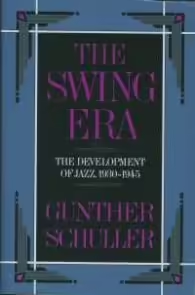The Swing Era - The Development of Jazz 1930-1945

| Издателство: | Oxford University Pr |
| Брой страници: | 944 |
| Година на издаване: | 2008 |
| Дата на издаване: | 2008-07-11 |
| ISBN: | 9780195071405 |
| SKU: | 21136260010 |
| Размери: | 23x15 |
| Тегло: | 1 грама |
| Корици: | МЕКИ |
| Цена: | 73 лв. |
Двайсет години след издаването на "Early Jazz", френският тромпетист, диригент, композитор, преподавател и водещ Шулер представя втория том от своята значима работа "История на джаза", който обхваща 900 страници. Той е вероятно най-добре подготвеният за анализ на стилове и техники сред всички автори, писали по темата. Никой предишен критик не е описвал с такава прецизност как различните стилове са се развивали и събирали в едно. Шулер отделя 40 страници за Луис Армстронг и 110 страници с 62 музикални примера за Дюк Елингтън. Той идентифицира уникалните характеристики на големите оркестри като тези на Каунт Бейси, Бени Картър, Лайъл Хамптън и много други; както и аранжорите Мел Пауъл, Дон Редман и Еди Сотер; солистите Банни Бериджан, Чарли Кристиян, Рой Елдридж и др.; малките групи на Нейт Коул или Джон Ърби; дори териториалните банди от Средния Запад. Освен това той разяснява приноса на белите биг бендове като тези на Чарли Барнет или Бени Гудман – те играят ключова роля в популяризирането на джазовата музика сред масови аудитории. Оценките му са оригинални, остроумни и балансирани: обсъжда недостатъците като стилистична застоинация или загуба на спонтанност наред с постиженията. По забележителен начин той проследява упадъка на суинга чрез повторение и формализиране. Schuller блести в обяснението си за великолепния период в историята на американската музика.
Copyright 1988 Reed Business Information, Inc.—Текстът се отнася до издание без наличност или изчерпано такова."
.
.